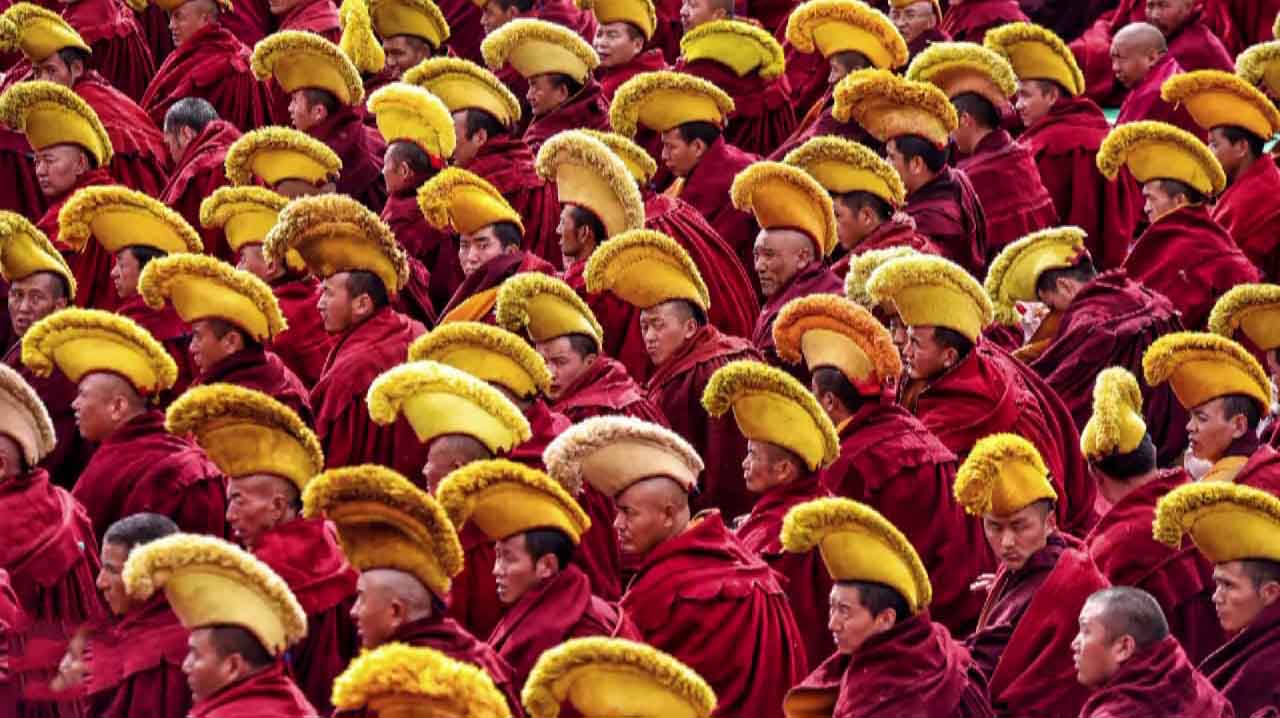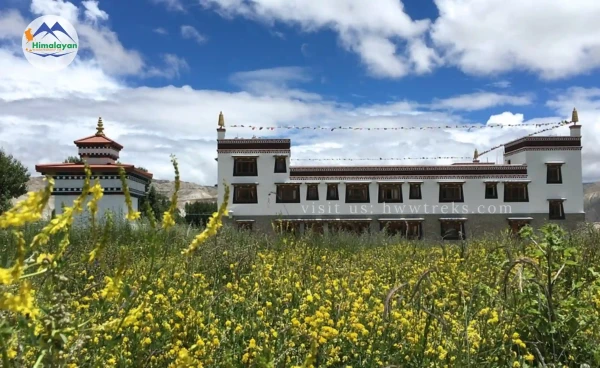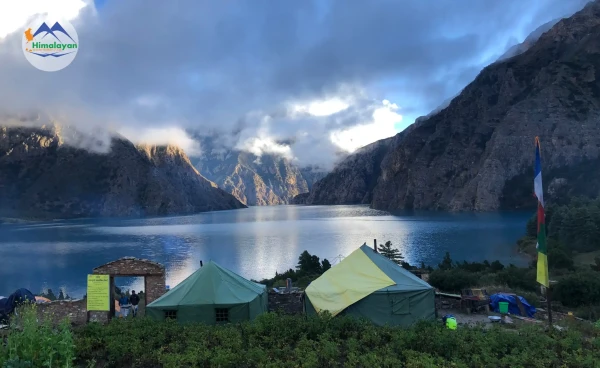- 04/09/2025
- Tags: Tibet travel Blog
- Himalayan Wander Walkers
Religion and Culture of Tibet
Tibetan culture is deeply rooted in Buddhism and influenced by neighboring countries like China, India, Nepal, and Bhutan. It is known for its unique religious practices, festivals, and art forms such as Thangka paintings and Cham dances. Tibetan Buddhism, with its four main sects, plays a central role in daily life, while ancient Bon practices still influence rituals. Exploring Tibetan culture offers insight into a rich, spiritual way of life on the Himalayan plateau.
Contents [hide]
Tibetan Culture

Tibetan culture flourished under the cultural influence of neighboring nations, including China, Mongolia, Nepal, India, and Bhutan, which played an important role in the past centuries. Gradually, the variations in Tibetan culture came to exist because of the different geographical parts of Tibet, like Kham (far-eastern part), Utsang (central and western Tibet), and Amdo (northern part). In addition, Tibet became isolated from the rest of the world due to its remoteness and inaccessibility.
The rich and ancient culture of the immense plateau of Tibet is largely based on religion. Though modernization has touched Tibet since 1980, when the country opened to foreigners, Buddhist philosophy is deeply rooted in the Tibetan people’s day-to-day life, supporting the preservation of their unique culture. Tibetan is well known for its religious paintings (Thangka) on walls and wood, metal images, etc. The cheerful performances of Cham (a dance performed by monks), Lhamo (Tibetan Opera), Gorshe (group circle dance), and folk songs represent the people’s love for the brave deeds of their ancestors and the resplendent land. Tibetans intensively celebrate many festivals relevant to religion, and pilgrimage to monasteries, lakes, and mountains became an indispensable part of their lives. So, once H.H. the 14th Dalai Lama said that Tibetan culture is Buddhist culture.
If you are traveling to Tibet, you must greet Tibetan people with Tashi Delek. That is the first step to learning Tibetan from your side.
Tibetan Religion

Buddhism is the dominant religion of present Tibet. Tibetan Buddhism is Mahayana Buddhism. Besides Tibet, it is widely practiced in the Himalayan regions of Bhutan, Ladhak, Sikkim, and Nepal, and it is even seen in other countries like Mongolia and Tuva. Buddhist people always do Kora (circumambulate) religious sites like monasteries or Chorten (Stupa) clockwise. Sacred objects, which belong to their religion, are highly respected. Religious pilgrimage sites like monasteries and holy lakes and mountains were established throughout the nation. Prayer flags are beautifully decorated in five different colors.
Bon is a pre-Buddhism that was the first known religion in Tibet. Although the Bon religion is distinct in some ways of practices from Buddhism, at the same time, some practices of Buddhism are influenced by Bon-like offerings during the ritual activities with symbolic animal forms made from barley flour. For centuries, Bon was widely practiced in Tibet, and Buddhism was gradually introduced during the period of Tibetan King Songtsen Gompo. At present, you will find some similarities in rituals and concepts that are adopted by both religions.
Between the 7th and 8th centuries, Buddhism widely flourished in Tibet, especially during the reign of Dharma King Tisong Detsen (the 38th emperor of Tibet). The origin and Buddhist teachings are from India. Although the Tibetan alphabet was created in the 6th century by the 33rd emperor of Tibet, Songtsen Gampo, active annunciation did not begin until the 8th century. Later on, four different Tibetan Buddhism sects were formed, namely the Gyelugpa, Skyapa, Nyikmapa, and Kyagyupa. Each sect has its own practices and head lamas, which can be seen nowadays, too.
The people who speak English in Tibet are happy to chat with you. It is appreciated by locals when you try speaking Tibetan and greeting them with Tashi Delek. To know more about the 90s culture and lifestyle of Tibet, read the book “My Land and My People,” the original autobiography of His Holiness the 14th Dalai Lama.



